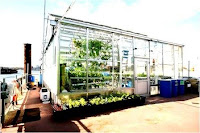loading...
Hello readers, meet again with Ahli Artikel. Today, Ahli Artikel will distribute the article entitled Crop Plants in relation to Environment. Please read the explanation below.
Crop Plants in relation to Environment
Factor In Crop Distribution
Staple agricultural crops show a marked tendency to geographic segregation despite the fact that they may grow well over wide areas. Thus corn and oats, although concentrated in the Corn Belt, are both grown successfully in forty-eight states in the union. The principal factors that influence localization are climate, topography, character of the soil, insect pest, plant diseases, and economic conditions.
Crop Plants in relation to Environment
Factor In Crop Distribution
Staple agricultural crops show a marked tendency to geographic segregation despite the fact that they may grow well over wide areas. Thus corn and oats, although concentrated in the Corn Belt, are both grown successfully in forty-eight states in the union. The principal factors that influence localization are climate, topography, character of the soil, insect pest, plant diseases, and economic conditions.
Climate
Climate is the dominant factor in determining the suitability of a crop for a given area. Knowledge of the crops and crop varieties grown in a given region is a better measure of climate, as applied to crop production in that region, than are complete climatic records. Thus, it is known that the climate in the Puget Sound region of Washington is more mild than that of eastern Maryland, and that the latter region is more mild than northern Texas, because winter oats survive the winter more regularly. It is also known that conditions in the winter-wheat region of Sweden are not so severe as in many winter-wheat regions in the United States, Because the Swedish varieties are less resistant to cold. Climatic counterparts of American agricultural regions are found in various parts of the world. The Great Plains region is similiar to the Ukraine because the same crop varieties thrive in both places. Many crop varieties are equally adapted to Australia and California. The irrigated regions of southern California, southern Arizona, and southern Texas are comparable to irrigated sections of the Mediterranean region. The wheats of Great Britain and Holland fail, miserably in the United States except in the mild cool humid Pacific Northwest,, where they thrive. The Corn Belt of the United States has a counterpart in the Danube Valley of Europe.
General Types of Climate
Climatic differences are due chiefly to differences in latitude, altitude, distances from large bodies of water, ocean currents, and the direction and intensity of winds.
Continental climates, which occur in interior regions, are characterized by great extremes of temperature between day and night and between winter and summer. The temperature ranges increase, in general, with the distance from the ocean. Some of these regions, such as the Steppes of Russia and the Great Plains of North America, are further characterized by an irregular approach of seasons, deficient rainfall, low humidity, and generally unobstructed winds. The limited rainfall that occurs is usually sporadic and often torrential. The great wheat areas of the world are found in such climates. Other hardy crops also are grown there.
Oceanic or marine climates are more equable. Moderate temperature change occur between day and night, and between winter and summer. The temperature changes are influenced predominantly by the sea or other large bodies of water. This influence results from differences in the specific heat of water and land. Water takes up and gives off heat only one fourth as rapidly as does land.
Three distinct climatic region are recognized in the United States. The first is a narrow strip of territory from the Pacific Coast to the Cascade and Sierra Nevada mountains, a purely oceanic climate in which the rainfall ranges from less than 1- inches in southern California to over 100 inches per year in the Northwest. In this region, the winters are mild, while the summers in the northern part and along the southern coastline are cool. The second region is the upland plateau from these mountains eastward to the 100th meridian. The climate is continental over most of this area. The third region is from the 100th meridian, where a continental climate prevails, to the Atlantic, where conditions again are modified by the ocean. The change from one type to the other is gradual in this area.
Well , that's some explanation about Crop Plants in relation to Environment, Hopefully can be useful. . .
HAPPY LEARNING
SOURCE:
Book Principles of Field Crop Production | John H. Martin - Warren H. Leonard | COLLIER Macmillan (1967)
Book Principles of Field Crop Production | John H. Martin - Warren H. Leonard | COLLIER Macmillan (1967)
 | |
| Picture of Crop Plants in relation to Environment |
loading...